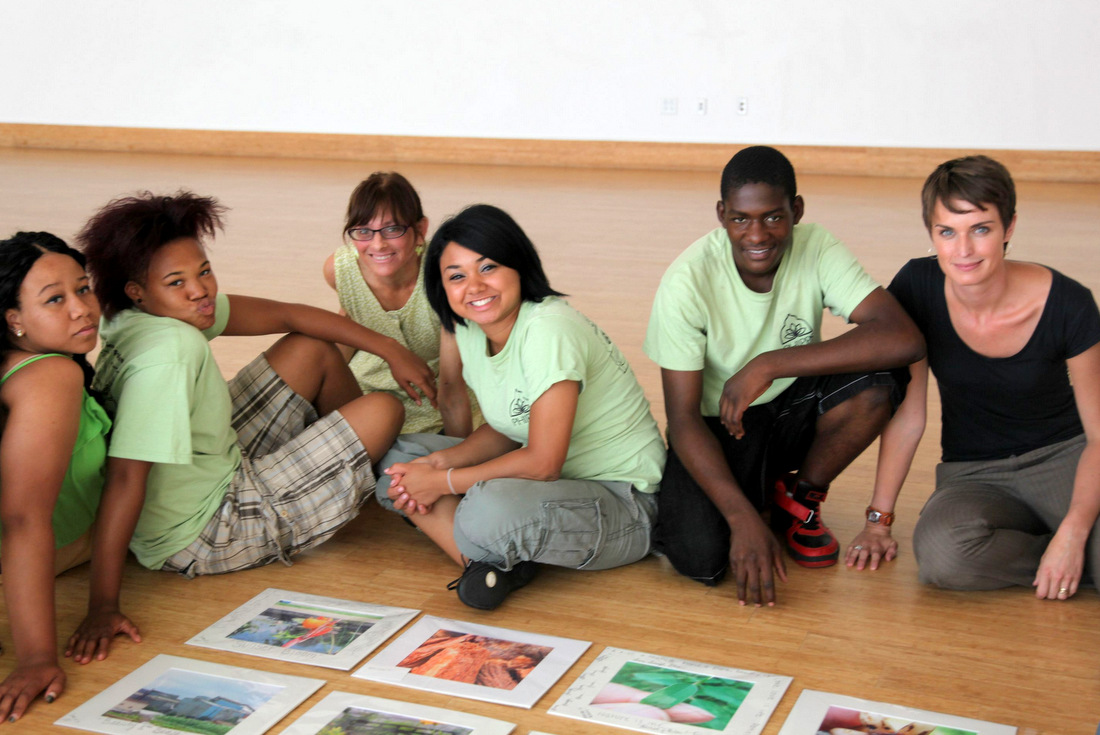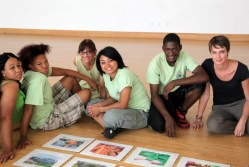
Molly Steinwald (right) with a group of high school interns (Photo by Julia Petruska.)
You can take Molly Steinwald out of the city, but you’re never, ever going to get the city out of Molly Steinwald.
Trust me. She’s tried.
Steinwald grew up a free-school-lunch kid on the outskirts of the old mill town of Manchester, N.H. She came from a large, religious family. Her mom died when she was young. “I didn’t do the skiing and mountain climbing thing,” she says. If you’d told her she’d grow up to raise a ruckus in the nature-education world she probably would have thought you were nuts.
Still, Steinwald found solace watching ants parade across the sidewalk, or tracing the intricate lines on a leaf. And when she graduated from high school, she went as far as she could from those gritty streets. She earned a degree in biology and studied Western gulls on Alcatraz Island. She earned her master’s degree researching kangaroo rats in the Chiricahua Mountains in Arizona, fitting the rodents with tiny spools of thread that unwound as they made their nightly rounds, leaving a Hansel-and-Gretel-like record of their forays.
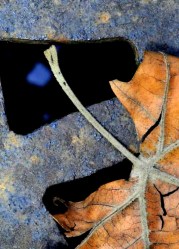
Photo by Molly Steinwald.
But the city always tugged at her. “I was really excited about big nature,” Steinwald says. “But every time I was working out in the desert, I’d find myself thinking, ‘I’m not really sure what I’m supposed to be doing with my life.’ I kept coming back to small-scale, mundane nature that I knew as a kid: ‘I need to get back to help people who never see this stuff.’”
Today, Steinwald is doing just that as director of science education at the Phipps Conservatory in Pittsburgh, where she has been charged with reimagining urban environmental education and revamping the venerable institution’s outreach programs for at-risk youth.
Steinwald’s basic assumption is this: You don’t have to go to a national park, or even a city park, to connect with the natural world. It’s crawling past you on the sidewalk or drifting through the air right under your nose. That, she says, is where city kids can make a lasting connection with nature — if they’re paying attention.
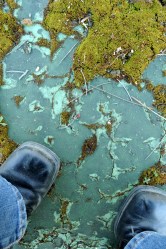
Photo by Molly Steinwald.
To get kids to tune in, Steinwald arms them (and groups of teachers) with digital cameras and challenges them to take pictures of the fragments of nature they find on the streets. (Partway through her scientific career, she discovered she had a gift for photography, and her images of urban, “mundane nature” have since been featured at the Sundance Film Festival and the World Wilderness Conference, among other places.) The approach is a departure from recent thinking on kids and nature, including the writing of Richard Louv, which generally defines “nature” as parks or green spaces — places apart from our everyday lives.
Not content to watch kids marvel at the nature they’ve newly found around them, Steinwald is studying the impact of these experiences over time as a part of a PhD in environmental psychology. She is also working with teachers, training science PhD students in photography skills as a means of communicating their work, and developing an environmental education and psychology research program and collaborations with universities.
Lisa Graumlich, dean of the University of Washington School of the Environment, says Steinwald is making waves in environmental education circles: “She was an urban kid. She brings the voice of people from a different economic class to the table in a way that creates space for a conversation about how these equity issues play out.”
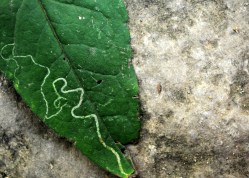
Photo by Molly Steinwald.
Graumlich says it makes intuitive sense that connecting to street-level nature will help build a lasting bond with the natural world. The next challenge is figuring out how to provide kids with more of these experiences: “It may be as simple as a mom walking home from the bus stop with three bags of groceries and two children in tow, feeling like she has time to look at a sidewalk crack.”
Seems simple enough, but it’s harder if you’re that mom – particularly if you’ve always been told that nature is “out there,” beyond the city limits.
“A lot of nature in the city is really small,” Steinwald says. “But I want to show these kids that even if their nature is small, it’s still darned good nature.”
